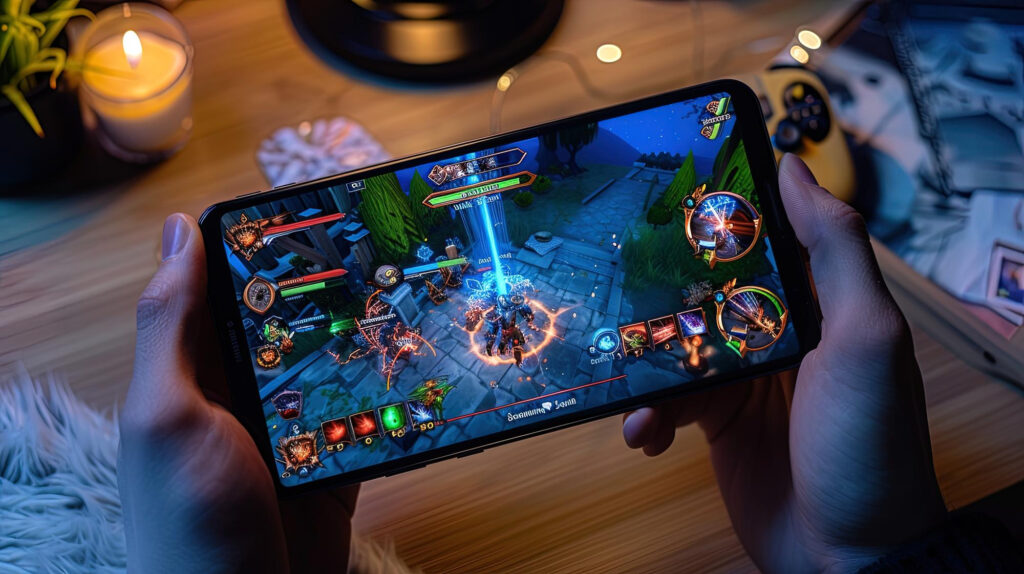App Game Development: Mastering the Key Steps to Success
In the rapidly evolving landscape of mobile gaming, app game development has emerged as a lucrative and competitive field. With over 2.7 billion mobile gamers worldwide as of 2021 (Statista, 2021), the demand for innovative and engaging mobile games is at an all-time high. This article delves into the key steps necessary for successful app game development, providing insights, real-world examples, and data-driven strategies to help developers navigate this complex process.

Understanding the Market Landscape
Before embarking on the app game development journey, it is crucial to conduct thorough market research. Understanding the target audience, current trends, and competitive landscape can significantly influence the game’s design and marketing strategy. According to Newzoo’s Global Games Market Report (2021), mobile gaming accounted for 50% of the global games market, generating over $175 billion in revenue. This statistic underscores the importance of identifying niche markets and player preferences.
Identifying Target Audience
Defining the target audience is a critical step in the development process. Developers should consider demographics such as age, gender, and gaming preferences. For instance, casual games like “Candy Crush Saga” appeal to a broad audience, while more complex games like “Genshin Impact” target a younger demographic with a penchant for immersive storytelling and intricate gameplay mechanics.
Conceptualization and Game Design
Once the market landscape is understood, the next step is conceptualization. This phase involves brainstorming ideas, creating a game design document (GDD), and outlining the core mechanics, story, and art style. A well-structured GDD serves as a blueprint for the development team, ensuring that everyone is aligned on the game’s vision.
Game Mechanics and User Experience
Game mechanics are the rules and systems that govern gameplay. Developers must create engaging mechanics that keep players invested. For example, “Fortnite” employs a unique building mechanic that differentiates it from other battle royale games, contributing to its massive success. Additionally, user experience (UX) design plays a pivotal role in retaining players. Research by the Nielsen Norman Group (2020) indicates that 94% of first impressions relate to design, emphasizing the need for intuitive interfaces and visually appealing graphics.
Prototyping and Iteration
Prototyping is an essential step in app game development. Developers create a minimum viable product (MVP) to test core mechanics and gather feedback. This iterative process allows teams to refine gameplay elements based on user input. For instance, “Among Us” underwent significant changes during its development phase, with the original concept being a much more complex game before pivoting to its current, simpler format that emphasizes social interaction.
Testing and Quality Assurance
Quality assurance (QA) testing is vital to ensure a polished final product. This phase involves rigorous testing for bugs, performance issues, and gameplay balance. According to a report by the International Game Developers Association (IGDA, 2021), 70% of developers consider QA testing to be one of the most critical aspects of game development. Implementing automated testing tools can streamline this process, allowing developers to focus on creative aspects while ensuring a bug-free experience.
Monetization Strategies
Monetization is a crucial consideration in app game development. Developers must choose a strategy that aligns with their target audience and game design. Common monetization models include in-app purchases, ads, and premium pricing. According to a report by App Annie (2021), in-app purchases accounted for 79% of mobile game revenue, highlighting the effectiveness of this model. Successful games like “Clash of Clans” leverage in-app purchases to enhance gameplay while maintaining player engagement.

Clash of Clans stands out with strong in-app purchases.
Implementing Analytics
Incorporating analytics tools is essential for understanding player behavior and optimizing monetization strategies. Tools like Google Analytics and Unity Analytics provide valuable insights into user engagement, retention rates, and spending patterns. For example, “PUBG Mobile” utilizes analytics to track player behavior, allowing developers to make data-driven decisions that enhance the gaming experience and increase revenue.
Marketing and Launch Strategy
A well-executed marketing strategy is vital for a successful game launch. Developers should leverage social media, influencer partnerships, and targeted advertising to create buzz around their game. According to a study by GameAnalytics (2021), games that utilized social media marketing saw a 30% increase in downloads compared to those that did not. Additionally, pre-launch beta testing can generate early feedback and build a community of engaged players before the official release.
Post-Launch Support and Updates
Post-launch support is crucial for maintaining player engagement and satisfaction. Regular updates, new content, and community engagement can significantly extend a game’s lifecycle. For instance, “Fortnite” has successfully maintained its player base through frequent updates, seasonal events, and collaborations with popular franchises. According to a report by SuperData (2021), games that receive regular updates see a 50% higher retention rate compared to those that do not.
Conclusion
In conclusion, mastering the key steps of app game development is essential for success in the competitive mobile gaming market. By understanding the market landscape, conceptualizing engaging game mechanics, prototyping, implementing effective monetization strategies, and executing a robust marketing plan, developers can create games that resonate with players. Continuous post-launch support and updates further enhance player retention and satisfaction. As the mobile gaming industry continues to grow, staying informed about trends and player preferences will be crucial for developers aiming to make their mark in this dynamic field.
Key takeaways include the importance of thorough market research, the necessity of a well-structured game design document, the value of iterative prototyping and testing, and the effectiveness of data-driven decision-making in monetization and marketing strategies. By following these steps, developers can navigate the complexities of app game development and achieve lasting success.

